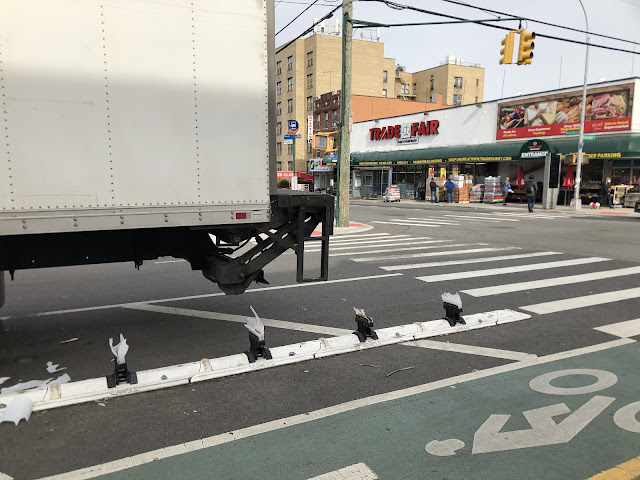This argument has a foundation as weak as many St. Paul street beds, with even more (pot)holes than Shepherd Road.
So wrote Zack Mensinger in a Minn Post editorial. It’s the very point I’ve made to drivers who complain that I, and other cyclists, are taking “their” lanes and parking spaces.
So what is the flimsy logic Mr. Mensinger has exposed? It’s the faulty basis for a mistaken belief that too many non-cyclists hold: They, on four wheels, are paying for roads and other motor-related infrastructure and we, on two (or, sometimes, three) are freeloaders.
The reality, as he points out, is all but diametrically opposite. In St.Paul, and most other places in the US, drivers don’t come close to paying the cost of streets.
For one thing, contrary to common belief, most potholes are not caused by freeze-thaw cycles, even in a place with winters as brutal as those in the Minnesota capital. Rather, most of the damage is done by motorized vehicles, especially the bigger and heavier ones.
Think of it this way: Sidewalks are subject to the same weather conditions streets incur. Yet we don’t see potholes on sidewalks, which are used by pedestrians. Even the heaviest cyclist with the heaviest bike is closer in weight to an average-sized pedestrian than to a car, let alone a truck or bus.
Another argument drivers make is that they pay gasoline taxes and vehicle registration fees. That is true, but those revenues don’t come close to paying for streets and roads. And, if you own a car but use your bike more (admittedly a rare circumstance in the US), you’re still paying the same registration fee.
Someone is sure to bring up tolls for bridges, tunnels and highways—which cyclists don’t pay because we don’t use those facilities except for bridges. But, as with gas taxes and registration fees, they represent a small part of roadway funding.
So, if those fees and taxes don’t pay for roads and streets, what does? In Minnesota and most other places, the majority of street and road financing comes from general funds. They usually include income and property taxes, which we pay whether or not we drive. In other words, some of the money that’s deducted from my paycheck pays for things I, as a cyclist and non-driver, will never use.
So, however and for whatever reasons drivers want to rant and rail ar us, they should thank us for subsidizing them.






